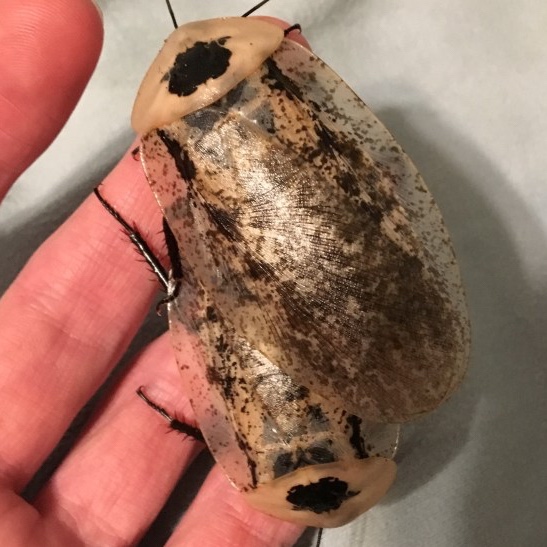Since I am doing more quarterly scheduling, this update will start off at the beginning of September where the Summer Collection Updates (Part 1 and Part 2) left off but will end around the Winter Solstice, as that is the actual end of Fall.
On September 28th, I received 42 bumblebee millipedes (Anadenobolus monilicornis) from Arthroverts. All of them arrived successfully, and I set them up in an enclosure with a mixture of compost, fermented aspen shavings, oak flake soil, hardwood sawdust, hardwood leaves, and calcium powder. I have experienced some die-off, but there seem to be many that prefer to hide just under the surface of the substrate. I hope to have this colony begin reproducing prolifically despite the minor issues.

Back on June 19th, I had acquired about a dozen nymphs of giant peppered roaches (Archimandrita tesselata). It was not until September 29th that the first one matured into an adult. Of all the roaches I have, this species is the only one that eats dead hardwood leaves at a significant pace. According to Roach Crossing, this species is known to depend on the hardwood leaves, so I had fortunately read this prior to my acquisition and was well-prepared to incorporate more hardwood leaves into their enclosure than with most of my other roaches. After that first adult, I have since had 5 mature to adulthood, including three of those molting on Christmas Day 2020.




Early fall in the American Southeast is definitely peak time for finding large insects. While there are some species, such as bird grasshoppers in the Schistocerca genus, that overwinter as adults and can therefore be found in spring, most species overwinter as eggs and therefore, the adults of the largest species are active in September and October. I typically find most of my mantids in the late Summer and early Fall and often keep several for breeding, however, the orthopterans are far more numerous in the right habitat. I do not work with as many orthopterans because I have had issues in past years with some more specialized habitat requirements for breeding. Nevertheless, this covers some of the interesting species I often encounter in early Fall.










On November 29th, 2019, I had acquired two larvae of the western Hercules beetles (Dynastes grantii). For most of the time, they were pet holes, but on July 15th, I found the first one had pupated. The had come from a museum that wanted me to raise them. I thought they were a male/female pair initially, but once they pupated, I found they were both females. I kept them until they emerged as adults. The first one eclosed in the middle of August, and I pulled her out to the surface on August 27th. The second had just pupated a few days before on August 22nd, so there was about a month gap between them. The second one then eclosed on September 24th. The first imago began came up to begin feeding on September 8th. I tried to acquire a male of this species once I confirmed both of mine were females, but I was strangely unable to find any available this year, although as I recall, there were ads for adults of this species on Beetle Forum in previous years around these times. This species is not native to my state, so I had acquired them under a USDA permit and was not allowed to send them to other breeders to work with them unless the recipient breeders had their own permits. Therefore, they both lived a few months in my care, the first died on November 6th, and then the second died on December 4th.
Sep 24th second eclosed Aug 22, second pupa, July 15 first pupa





On November 28th, I attended a reptile expo, and I acquired a small Phrynus whitei from Classic Jurassic Exotics. I set it up in a small vial with a vertical piece of Styrofoam, basically making a smaller version of my Damon medius tank. The little guy was doing quite well, however, I noticed it had not molted and then died rather suddenly on January 8th. Afterwards, I learned from a fellow hobbyist that the staple diet of fruit flies that can work well for mantids actually lacks essential nutrients amblypygi need to molt.


In the Fall of each year, I tend to find several green lynx spiders (Peucetia viridans). This year, I collected an adult female and her egg sac. I am rearing the babies on fruit flies, and they seem to be doing fairly well. I have changed their habitat several times, and they are currently living communally in a 12” mesh cube.


This covers most of the new developments in the Fall. The Summer Updates 1 and 2 have already covered a number of the longer term projects, and due to concurrent composition, those projects were not covered here to limit redundancy. Those projects would include the lubber grasshopper colony, the Brunner’s stick mantises, and other such projects already addressed in the Summer Updates.

